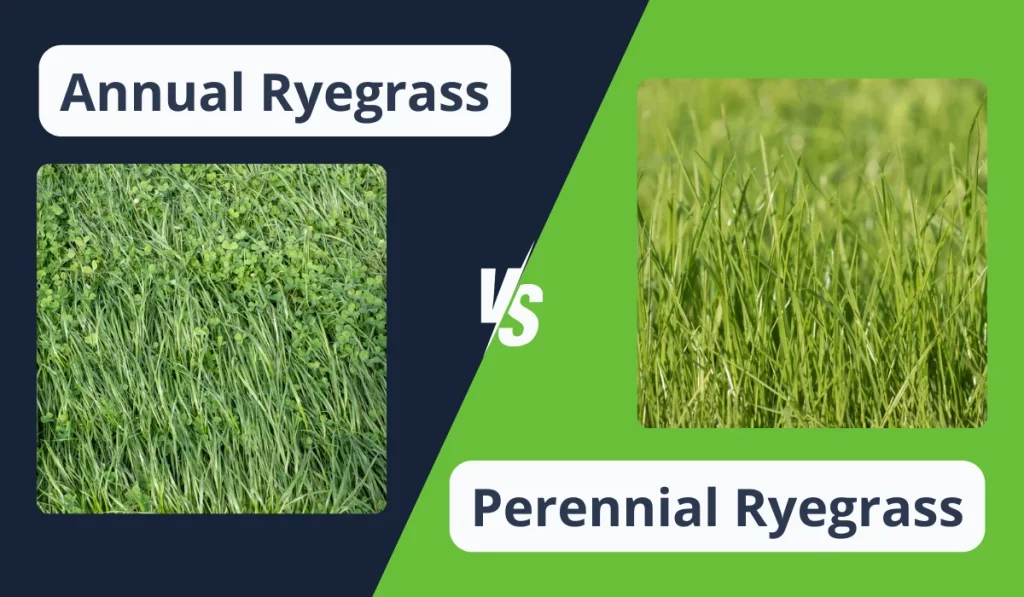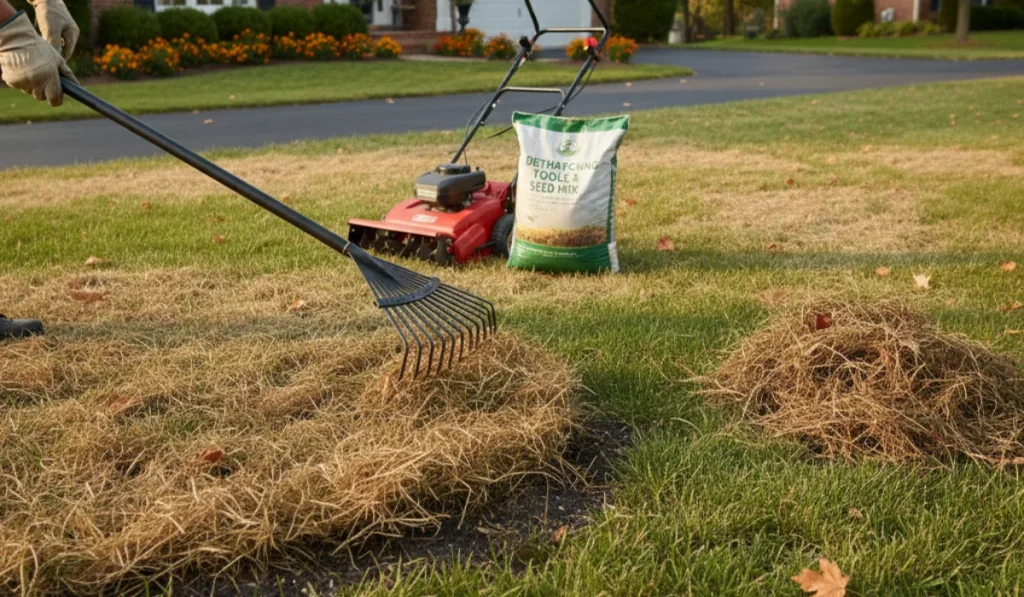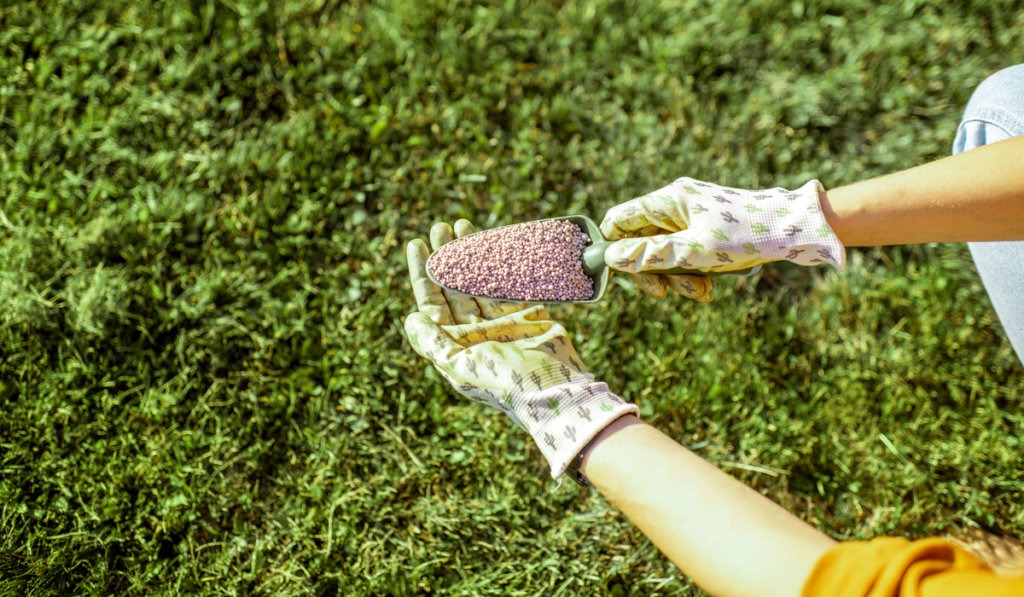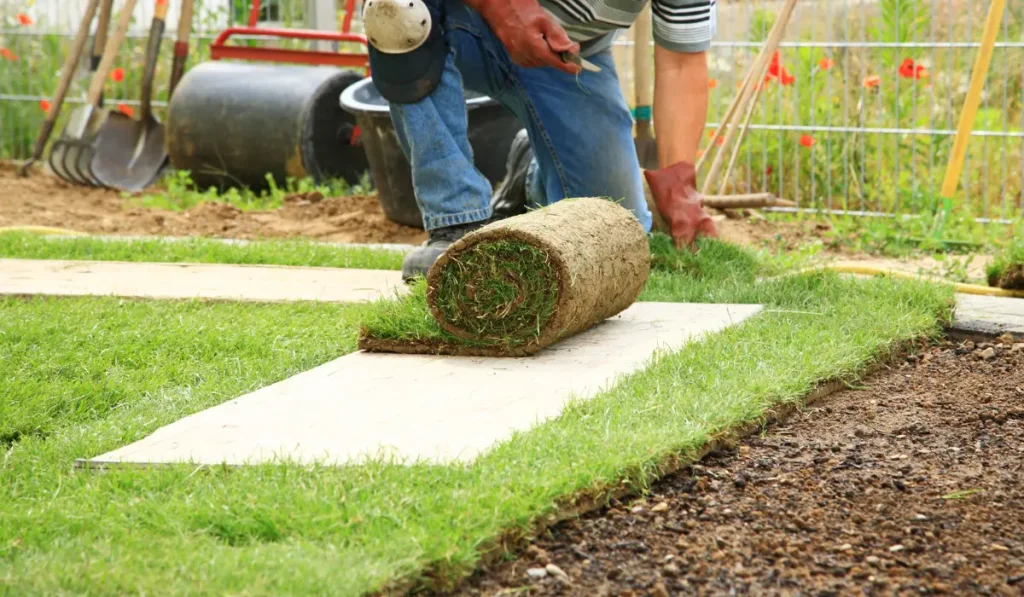When choosing grass for your lawn or landscaping, two types often come up: annual ryegrass and perennial ryegrass. Both are popular cool-season grasses, but they serve different purposes.
Whether you’re overseeding, starting a new lawn, or improving your landscaping, understanding their differences can help you pick the best grass for your needs.
Key Takeaways
- Annual ryegrass has fast germination, lasts one season, and works well for temporary lawns or overseeding warm-season grasses.
- Perennial ryegrass is highly durable, lasts year-round, and is ideal for permanent lawns, golf courses, and sports fields.
- Mixing ryegrass with other grasses creates a resilient lawn, offering improved disease resistance and wear tolerance for various climates.
- Proper care includes weekly watering, sharp mowing blades, and using annual ryegrass for effective erosion control on slopes.
Annual vs. Perennial Ryegrass: What to Know

Annual and perennial ryegrass each have unique features that make them suitable for different needs. The table below breaks down their key traits, such as lifespan, growth speed, and uses, for easy comparison.
Use this guide to pick the type of ryegrass that fits your lawn’s needs.
| Features | Annual Ryegrass | Perennial Ryegrass |
|---|---|---|
| Lifespan | Usually planted in September and lasts until the mid-summer when temperatures are high. | Lasts year after year |
| Growth Speed | Very fast germination | Moderate germination |
| Durability | Less durable | Highly durable to create a disease-resistant lawn |
| Uses | Overseeding warm season grasses. | Permanent residential lawns, golf courses, sports fields |
| Cost | Lower upfront cost | Higher upfront cost |
How to Choose the Best Grass
Choosing the right grass for your lawn depends on your specific needs and goals. Each type of ryegrass offers unique benefits that suit different purposes and conditions.
Keep these key factors in mind as you decide which grass is best for your space:
Think About Your Lawn’s Purpose
If you need a temporary green lawn, annual rye is a great option. It’s also useful for overseeding bermudagrass or zoysia during cooler months. For a long-term lawn or high-quality turfgrass, perennial rye is the better choice.
Consider Your Climate
Both grasses are cool-season grasses that grow well in mild climates.
Annual ryegrass, also called Italian ryegrass, handles a wider range of conditions but lasts only one season. Perennial ryegrass is more durable for year-round use in climates with cooler temperatures.
Why Mixing Grass Types Can Help
Sometimes, mixing both grasses with other turf types can give you the best results.
For example, pairing perennial ryegrass with Kentucky bluegrass or tall fescue creates a turfgrass blend that resists disease and handles wear better.
Similarly, annual ryegrass works well for overseeding warm-season grasses during the winter to keep a year-round green color.
Tips for Maintaining Ryegrass
Taking care of your ryegrass doesn’t have to be complicated. Follow these simple tips to keep your lawn healthy, and looking its best:
- Watering: Provide about 1 inch of water per week to keep both grass types healthy.
- Mowing: Maintain a neat lawn by using a mower with sharp blades and keeping the mowing height between 2 and 3 inches.
- Erosion Control: Use annual ryegrass to prevent soil erosion on slopes or areas prone to runoff.
- Aerate Annually: Aerate the soil once a year to improve airflow and allow water and nutrients to reach the roots.
- Inspect for Pests: Watch for signs of pests like armyworms or chinch bugs and treat them promptly.
Need Help Choosing Between Annual and Perennial Ryegrass?
Annual ryegrass and perennial ryegrass are both excellent choices, but they serve different needs. Choose annual ryegrass for quick coverage or temporary lawns and perennial ryegrass for durable, long-lasting turf.
By understanding their strengths, you can create a beautiful, green lawn that fits your goals and your climate.
Still not sure which type of grass is right for you? Lawn care pros like SodLawn can help you with that. Contact us for expert advice on creating the perfect lawn.
Frequently Asked Questions
Can ryegrass survive in areas with limited sunlight?
Ryegrass grows best in full sun but can tolerate light shade. Perennial ryegrass works better in partial shade compared to annual ryegrass. For deeply shaded areas, mixing ryegrass with shade-friendly grass types like fine fescues can improve overall lawn performance.
Is ryegrass a good choice for high-traffic areas?
Perennial ryegrass is excellent for high-traffic areas like sports fields and playgrounds because it is highly durable. Annual ryegrass is less resilient and better for temporary coverage or areas with minimal foot traffic, like seasonal lawns or erosion control zones.
How often should ryegrass be fertilized?
Fertilize ryegrass every 6–8 weeks during its growing season to keep it healthy. Use a nitrogen-rich, slow-release fertilizer for steady growth and better resilience. Proper fertilization helps maintain a thick, green lawn that resists weeds and stress.



